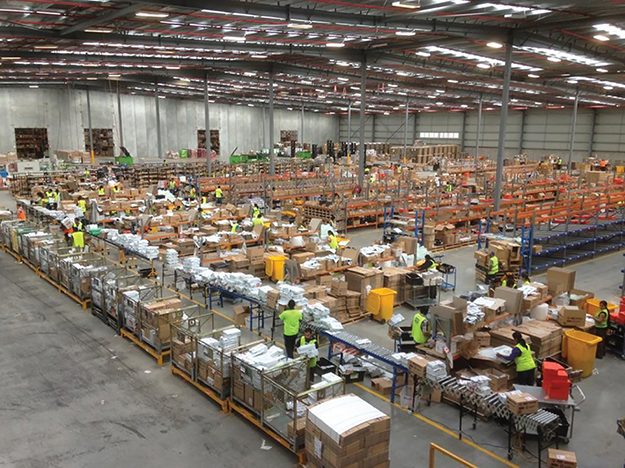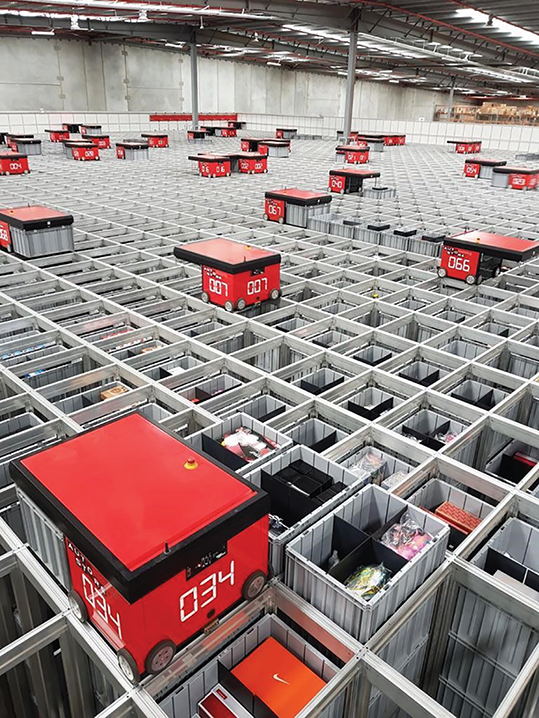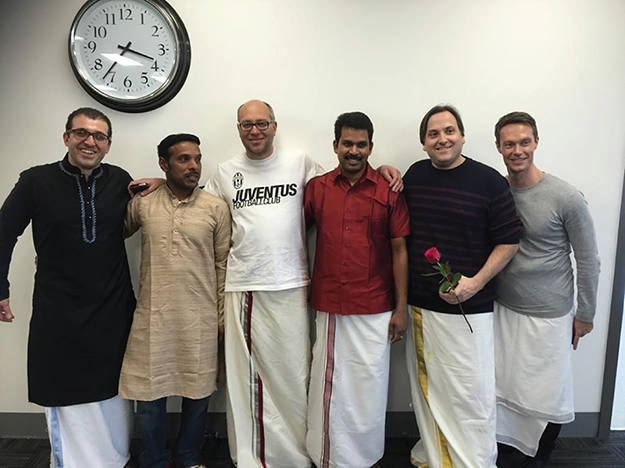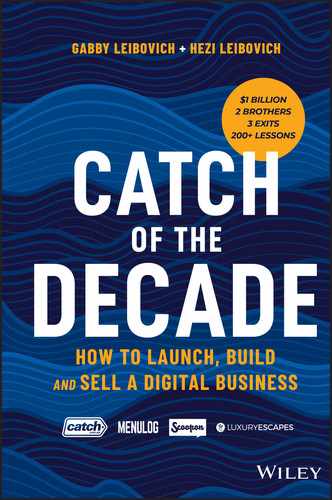CHAPTER 9
The robots are coming!
Once we had this travel matter under control, we as a management team had to face another expensive issue that had been bothering us for a long time. It was a situation we could no longer ignore. The problem? We were just growing too fast and our warehousing facility could not keep up.
Logistics is not a sexy topic to most, but it is to us because it's the beating heart behind the success of our business. Stick with us as we tell you why, because the story of how we came to revolutionise our logistics system and install one of the world's most advanced robotic warehouse systems encapsulates the essence of what made us so successful as a business.
For a start, what does logistics even mean? To us, it's ‘how do we pack lots of items into a box and ship them to our customers quickly, while still turning a profit at the end of the month?’ We had almost 40 000 m2 of warehouse space spread over two locations, with 200 staff, so to automate something of this scale was seriously challenging.
Vijay was part of the team tasked with finding a new solution.
We looked around to see if anyone else was doing anything remotely like this but the search was fruitless. There was not one business in Australia at that time dealing with the volume and operational complexity we were facing.
The downside of being market leaders in e‐commerce in Australia was that we were regularly faced with lots of unique challenges that no‐one else was experiencing yet.
The solution? We took a leaf out of our Mazal playbook and went out to educate ourselves: Gabby, Vijay and Tim, our chief operations officer, spent months touring some impressive local warehouses and talking to the top experts in the business about a possible solution. We even popped over to Singapore to inspect a bunch of newly launched robotic systems.
As the search for a warehouse solution progressed, the business kept growing so we had to scale up on the run. For example, at the start of our search, we had a budget of $3 million to spend on a warehouse solution that could handle 5000 products. Three months later, the volume of products we had to manage had grown to 10 000. Three months later, 15 000. Did we mention growing pains?
Within six months of setting out on our educational journey, we'd made a decision. We decided to implement an Autostore robotic warehouse system, which would enable us to fully automate our picking and packing process.
Autostore is a six-metre-high Rubik’s cube–style box containing 25 000 plastic bins, each the size of a large microwave, stacked on top of each other. The cube is covered with a massive grid and 70 bright red robots shuttle across the top of the grid to dip down and retrieve the bins as needed and then shuffle each bin filled with the right stock to the ‘pick and pack’ stations on the ground below. Think of it as a gigantic game of Tetris* Search ‘Autostore—Catchoftheday’ on YouTube and watch the videos. It's phenomenal to see it in action. The video is also on catchofthedecade.com.
So, 12 months and an investment of $20 million later, we became the proud owners of one of the smartest, fastest and most space‐saving automated warehouse systems available, and the first distribution centre in Australia to have one. The benefits of the system were numerous. We could increase our range and our speed of packing/shipping, and reduce the error rate as well, all of which helped us maintain our commitment to offering the highest standards of customer service.
The best part about our new robots? They didn't take the weekend off, have smoko breaks or get tired. Automation heaven.
The very best bit? We didn't lay off a single worker throughout the entire automation change‐over. In fact, the introduction of the system actually generated more employment opportunities because we were now able to promote more products and ship them more quickly. We were very pleased with and proud of this achievement.

Our warehouse prior to automation.
As part of this growth phase, we employed an exceptional warehouse manager by the name of Saar Davidi. He joined us soon after the automation process began to bring everything back in order.

Our warehouse after automation. It cost us $20 million to build, but it set us up for the future.
The one major stuff‐up we made in this whole automation journey was in our timing. We made the silly mistake of trying to integrate the automation process into the warehouse in the months of October and November (2014). We had two choices to make. If we could get the automation done on time, we would be able to fulfil the large anticipated Christmas trade order volumes. Without a new warehouse system, we probably couldn't. However, if we weren't able to get it done on time, we would be stuck with a partially functioning warehouse that would certainly not be able to fulfil the orders. Optimistically, we went for it and we failed. For all of you online retailers out there thinking of doing something similar just before the busiest time of the year, please don't! As any retailer will know, the third quarter of the year is ‘the money quarter’ where you make 40 to 70 per cent of your yearly profits. Sadly, because of this timing decision, we made no profit in the last three months of that year. All of our profits were spent on extra staff and integration costs within our warehouse. For a retailer counting on the Christmas sale period this was a massive letdown.
Today, Saar manages Catch's operation from a distribution centre at Truganina, Victoria, and has built one of the best performing hubs in the country. This well‐oiled operation is one of the main factors that attracted Wesfarmers to team up with us (more on that later).
Saar is much more than a warehouse manager. He lives and breathes the Catch DNA. He is an intrapreneur of the highest order, an employee who behaves as if he owns the business. He drove 90 minutes each way to get to work and home, but he was always the last one to stay back and fix that thing that needed doing. We'll never forget the time the warehouse roof sprung a massive leak. He could have called a tradesperson to fix it, but that would have taken a day or more. Instead, he found a ladder, gathered up the required tools, crawled into the roof cavity and fixed it himself, there and then. He didn't have to do it; it wasn't his job, but he knew it would save us a headache. That's the kind of attitude that makes him, and people like him, so indispensable to Catch.

Celebrating the Indian holiday of Onam. L to R: Saar, Vijay2, Gabby, Soji, Hezi and Ryan Gracie.
